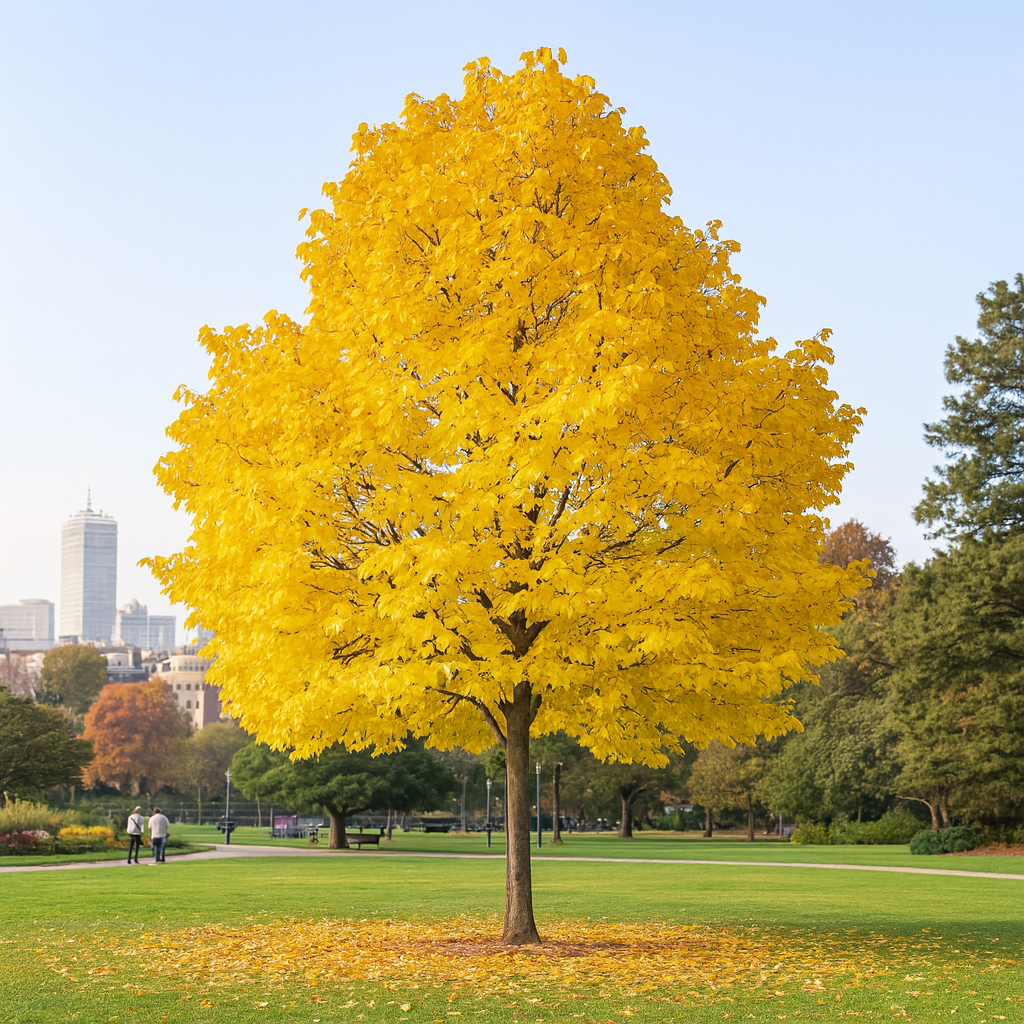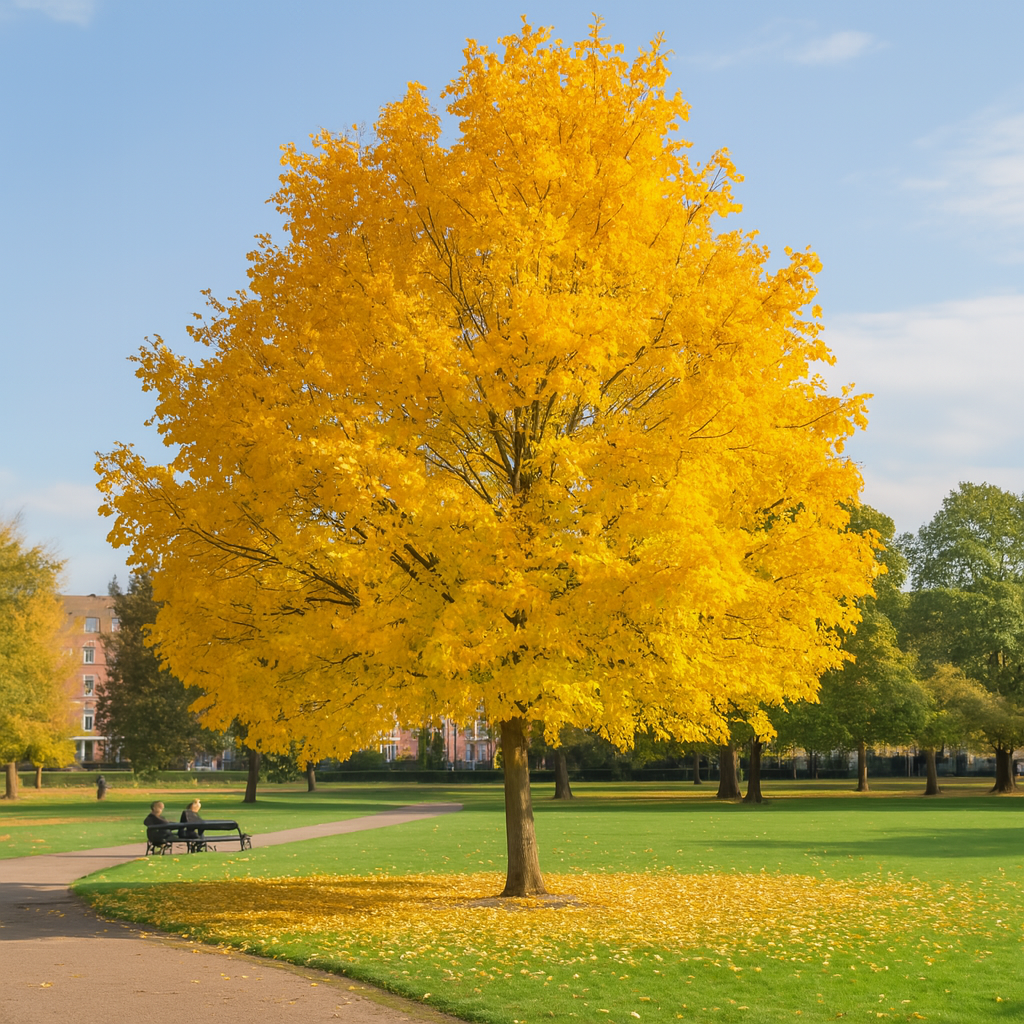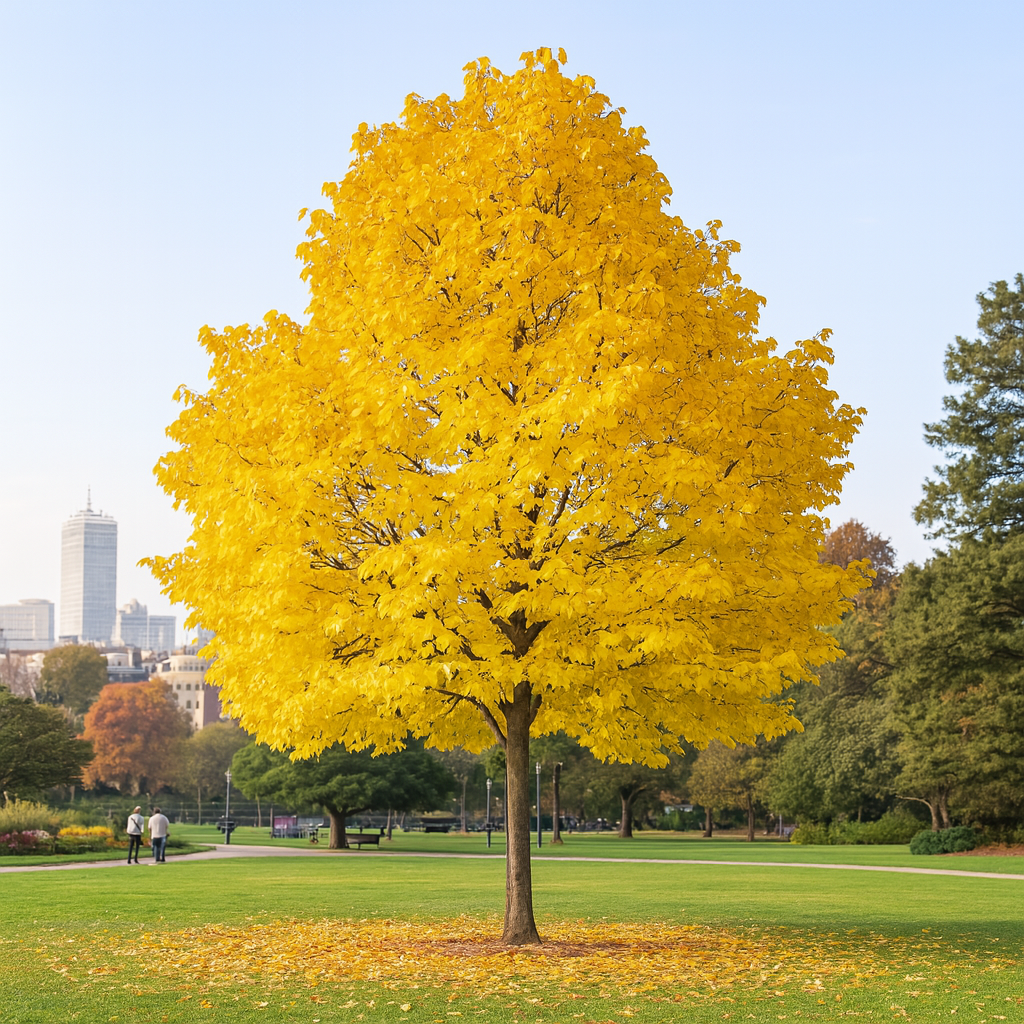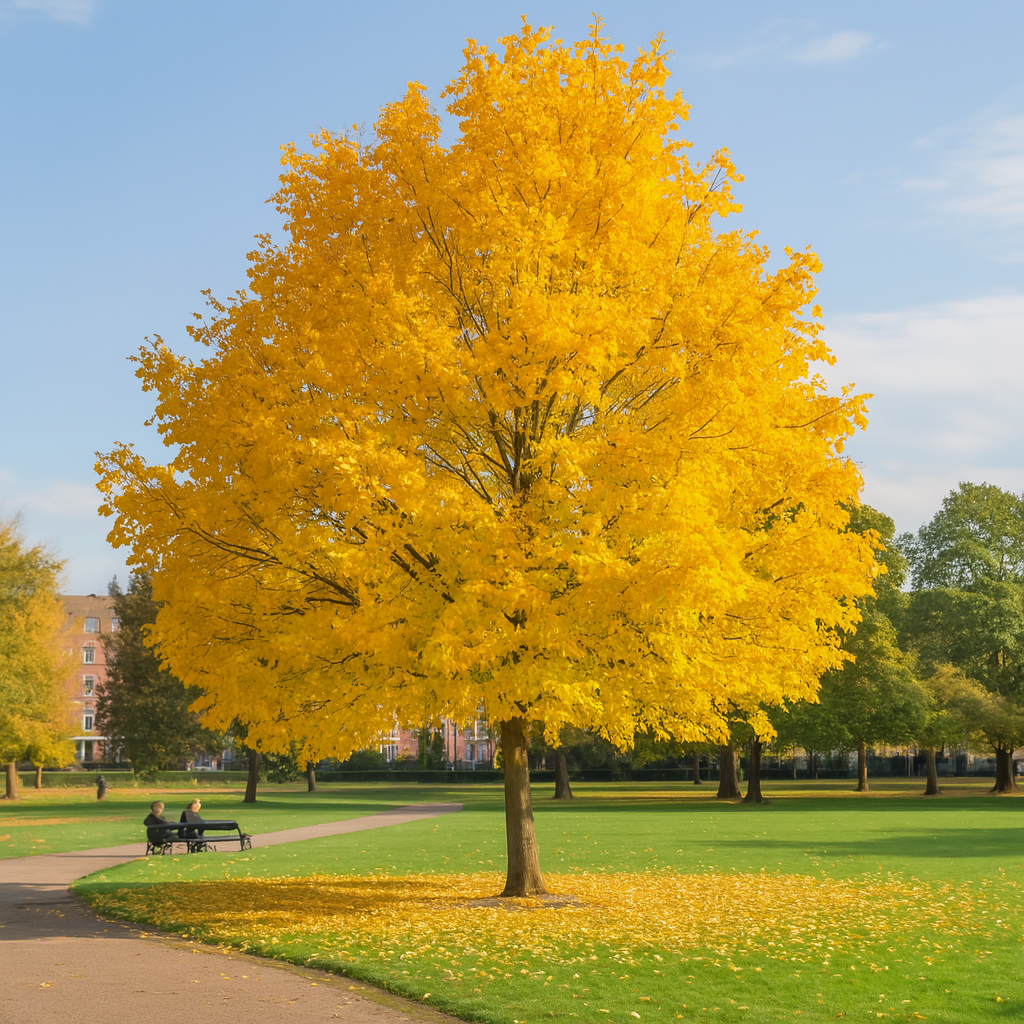Limited Quantities - Reserve Now For Fall
Yellowwood Tree
Yellowwood Tree
Couldn't load pickup availability
Cladrastis kentukea
Yellowwood Tree
The Yellowwood Tree is a refined native shade tree admired for its elegant, vase-shaped form, smooth gray bark, and cascading white flower clusters that appear in late spring. Known for its graceful appearance and brilliant golden-yellow fall color, Yellowwood brings beauty, structure, and pollinator support to any garden or landscape.
Ideal for front yards, pollinator beds, large gardens, and native plantings, this tree adds seasonal interest and sophistication while thriving with minimal care.
Yellowwood Tree Overview
| Attribute | Details |
|---|---|
| 🌿 Botanical Name | Cladrastis kentukea |
| 🏷️ Common Names | Yellowwood, American Yellowwood |
| 🌳 Mature Height | 30–50 feet |
| 🌐 Mature Width | 35–50 feet |
| 📈 Growth Rate | Moderate (1–2 feet per year) |
| ⏳ Lifespan | 50–100 years |
| 🧊 USDA Zones | 4–8 |
| ☀️ Sun Preference | Full sun to partial shade (best flowering in full sun) |
| 🧱 Soil Type | Moist, well-drained loam, sandy, or clay soils |
| ⚖️ Soil pH | Slightly acidic to neutral (5.5–7.0) |
| 💧 Water Needs | Moderate; prefers even moisture |
| 🌸 Flower Color | Fragrant white wisteria-like clusters; bloom every 2–3 years |
| 🍁 Fall Color | Bright golden-yellow foliage |
| 🐝 Pollination | Attracts bees, butterflies, and pollinators |
| 🌿 Growth Habit | Upright, spreading canopy with smooth, beech-like bark |
| ↔️ Spacing | 30–40 ft for specimen or shade tree use |
| 🏡 Landscape Uses | Shade tree, specimen planting, native gardens, pollinator beds |
| 🧹 Maintenance Level | Low to moderate |
Environmental Benefits
🌸 Provides nectar-rich blooms for bees and pollinators
🍁 Adds seasonal shade and golden fall foliage to large landscapes
🌿 Supports native ecosystems and biodiversity
🌎 Adaptable to a variety of soils and climates with strong resilience
Pros & Cons
| ✅ Pros | ⚠️ Cons |
|---|---|
| 🌼 Elegant, fragrant white flower clusters | 🌸 Heavy bloom may only appear every 2–3 years |
| 🌳 Attractive form with smooth bark and broad canopy | 🪵 Branches may be prone to breakage without proper structure |
| 🐝 Excellent pollinator and wildlife value | 💧 Prefers consistent moisture; avoid long droughts |
| 🍁 Brilliant golden fall foliage | ✂️ Needs occasional pruning to maintain form and structure |
| 🏡 Great choice for shade, structure, and visual impact | ❄️ May leaf out later in spring in colder climates |
Planting & Care Guide
🛁 Water thoroughly before and after planting to settle roots
🕳️ Dig a hole twice as wide as the root mass; plant at soil level
🌾 Mulch 2–3 inches deep around the base to retain moisture and suppress weeds
💦 Water weekly in the first two years; taper as tree matures
✂️ Prune in late winter to shape and remove weak or crowded branches
🧪 Fertilize in early spring with a slow-release, balanced tree formula
The Yellowwood Tree brings graceful beauty, seasonal color, and pollinator value to any landscape. Whether you’re creating a native garden, anchoring a yard with a specimen tree, or adding flowering interest to a large space, Yellowwood delivers refined elegance and strong ecological impact for generations to come.
Share




